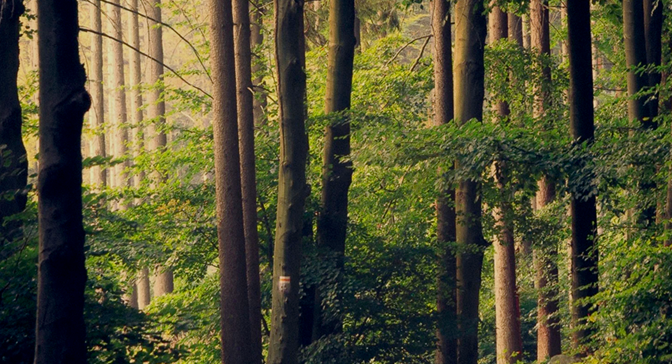Habitat protections take another hit

By Treekeepers of Washington County
Rapid development in Washington County has taken a toll on the large, mature trees that have made it such an inviting place to live.
A recent application in Cedar Mill was submitted and approved by the County. This 15-home, four-acre development is in a protected Significant Natural Resource area (SNR).
Treekeepers WC believed that the Estates at Leahy Park development plans did not comply with the necessary “clear and objective” requirements for these developments due to continued lack of a Statewide Goal 5 Plan, which requires local governments to inventory significant natural resources and come up with programs to protect them. Joanne Delmonico of Treekeepers WC, represented by attorney Ken Dobson, appealed the decision before Washington County’s Land Use and Transportation (LUT) hearings officer. When that appeal was denied, they carried the request to the state Land Use Board of Appeals (LUBA) where the appeal was recently denied.
Unfortunately, the development at Leahy Estates will require removal of 85% of the upland wildlife habitat. The “enhancement” with native saplings and shrubs will create a less hospitable environment for the wildlife who use this important stream corridor.
A ray of hope
The good news related to SNRs is that a November 2022 decision by Oregon’s Land Conservation and Development Commission (LCDC) found good cause to proceed to a contested-case hearing for the requesters’ petition alleging that the county is not in compliance with Statewide Planning Goal 5. The LCDC authorized their director to issue an order describing the reasons for this decision and appoint a hearings officer to conduct a contested-case hearing sometime in 2023. The Commission will take it up again in April 2023.
The case is related to the 2017 enforcement order requiring Washington County to update the SNR regulations and guidelines to comply with Oregon’s Goal 5. This is good news for Community Participation Organization (CPO) 4M, and Jill Warren and the Committee for Community Involvement (CCI) SNR subcommittee, who have been working to keep Washington County in compliance with Statewide Planning Goal 5.
County planners have been warning developers proposing new projects on these significant natural resource sites that they may face appeals and challenges. But meanwhile, developments are being permitted that might not be allowed if the statewide goals were being applied. It’s a loophole, and builders are making the most of it.
Washington County Department of Land Use and Transportation (LUT) have stated that they will be rewriting its rules again, but those might not be complete until the end of 2023. They are hiring a consultant to help with that work, planning a limited update of the county’s wildlife habitat inventory, analyzing potential impacts to natural resources, and refining regulations to further meet Goal 5 requirements as required by the LUBA remand — a process that will take about 18 months. Watch for a public process that will allow members of the public to weigh in before Washington County Board of Commissioners will vote to approve or reject the new rules.
Washington County’s population rose from 153,814 in 1969 to 600,811 in 2021, for a net gain of 290.6%. The forecast shows that we are expected to gain over 200,000 new residents by 2045. Deciding how that growth takes place — and how it affects our urban forest — is something we desperately need to address.
Some history
The path of county regulations over natural resources and open spaces has been complex. In the 1980s, the county identified Significant Natural Resource (SNR) Areas to comply with statewide planning Goal 5.
In 2005, in concert with Metro’s planning efforts, the county adopted a comprehensive program that included guidelines for permitting housing developments. In 2017, the state legislature required that local governments adopt and apply only ‘clear and objective standards’ to regulate those housing developments. At that time, areas with mapped SNRs were not included, because those areas were not considered “buildable land.”
In June 2020, LCDC ruled that the county was out of compliance with statewide planning goals and ordered the county to stop processing housing development applications for Goal 5 significant natural resource areas until the county adopted new regulations that were “clear and objective.”
In October 2020, the county adopted Ordinance 869 A, which revised the standards in Washington County’s Community Development Code (CDC) chapter 422 to make them “clear and objective.” Ordinance 869A took effect in December 2020, lifting LCDC’s enforcement order. Ordinance 869A gave developers the right to remove up to 85%t of a significant natural resource.
In September 2021, Ordinance 869A was appealed to LUBA by CPO 4M. LUBA agreed that code standards were not clear and objective and remanded the issue back to the county.
That means that the county falls back on its old rules, which is why it can grant approval for developments like the Estates at Leahy Park. We’re back to the same problem: the county has no enforceable protections for significant natural resources.
Looking forward
We know that developments are inevitable and necessary. But we hope that the county and developers would look at more creative solutions to protect our most precious natural resources and allow trees to coexist with coming developments.
Sign our petition
Meanwhile, in an effort to help spur protections for trees, Treekeepers of Washington County is circulating a petition that urges our County Commissioners to initiate a countywide urban forestry program to offset the negative impact of increasing housing development on tree canopy and the localized impact of climate change.
Sign up to receive our Newsletter, read the archives, and consider getting involved with our group if you want to protect the tree canopy.





